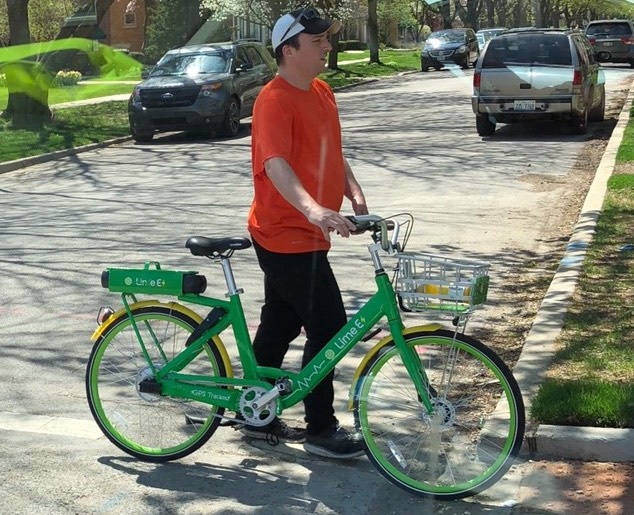During a conference call on Thursday, stakeholders told city officials that they were concerned about low participation by residents in Chicago's dockless bike-share pilot. That's largely been due to the fact that there are only 350 bikes spread over a service area with about 700,000 people, most of the city south of 79th Street. In contrast, Seattle, with 725,000 residents, has about 10,000 DoBi bike nowadays.
It looked like the problem was only going to get worse after July 1, when the city's dockless permitting guidelines required the companies with wheel-lock-only bikes to switch to "lock-to" models with a built in cable lock or U-lock that can be used to secure the bike to a rack or pole. Currently companies are allowed to deploy 250 lock-to bikes but only 50 wheel-lock cycles, as a CDOT strategy to prevent sidewalk clutter, vandalism, and theft.
CDOT gave no sign that they planned to change the policies, and LimeBike and Ofo had indicated they would drop out of the test and pack up their fleets of 50 bikes each if the city didn't relax the rules. So it looked like there would only be 250 bikes -- Pace's lock-to cycles, which have cable locks -- after Sunday.
But late Friday afternoon CDOT made a surprise announcement that they are relaxing the rules. The permitting guidelines have been revised to allow vendors to deploy up to 350 bikes. The city is also allowing LimeBike and Ofo to keep their 50 wheel-lock bikes on the street for the entire pilot, which ends in November.
Also on Friday, the Tribune reported that Jump Mobility, which uses electric-assist bikes with built-in U-locks and was recently bought by Uber, is joining the pilot. LimeBike and Ofo haven't gotten back to me yet about whether they plan to stay in the program.
But that means that in a worst-case scenario there will be 350 Pace bikes and 350 Jump cycles, for a total of 700. If LimeBike and Ofo keep their wheel-lock bikes on the street, that's 800 vehicles. And in the (unlikely) event that those two companies choose to deploy another 300 lock-to cycles, there would be 1,400 bikes in the service area. Any way you slice it, the city's announcement is good news for those who want to see the DoBi pilot succeed.
Update 7/2/18, 1 PM:
Marco McCottry, Ofo's head of Operations for North America: “A lock-to requirement is the wrong approach and will only cause a variety of unintended consequences. We remain engaged with the city to increase this unfairly low cap and build a program that best serves riders."
Jessie Lucci, LimeBike's general manager for Chicago: "We’re grateful that CDOT heeded the calls of Lime riders who find [wheel-lock-only] the most convenient form of bike-sharing, but this does nothing to address equity for the Far South Side where we only have 50 bikes to serve 700,000 residents over 50 square miles. At the same time, expanding lock-to will only cause more frustration among private bike users in this pilot area due to complaints that precious bike rack space is being taken up by lock-to bikes. Given that the Far South Side only has as many bike racks as Lakeview alone on the North Side, it begs the question as to why the city is expanding lock-to, but not [wheel-lock-only] in the pilot. Why not expand all options for the south side?"
Of course, one obvious reason why Chicago is expanding lock-to, but not wheel-lock-only, is concerns about sidewalk clutter, vandalism, and theft. Yesterday the Washington Post reported that in Washington, D.C., where the city has allowed DoBi compies, including Ofo and LimeBike, to deploy up to 400 cycles each, a city official recently said some companies have lost up to 50 percent of their fleets to vandalism and theft.




